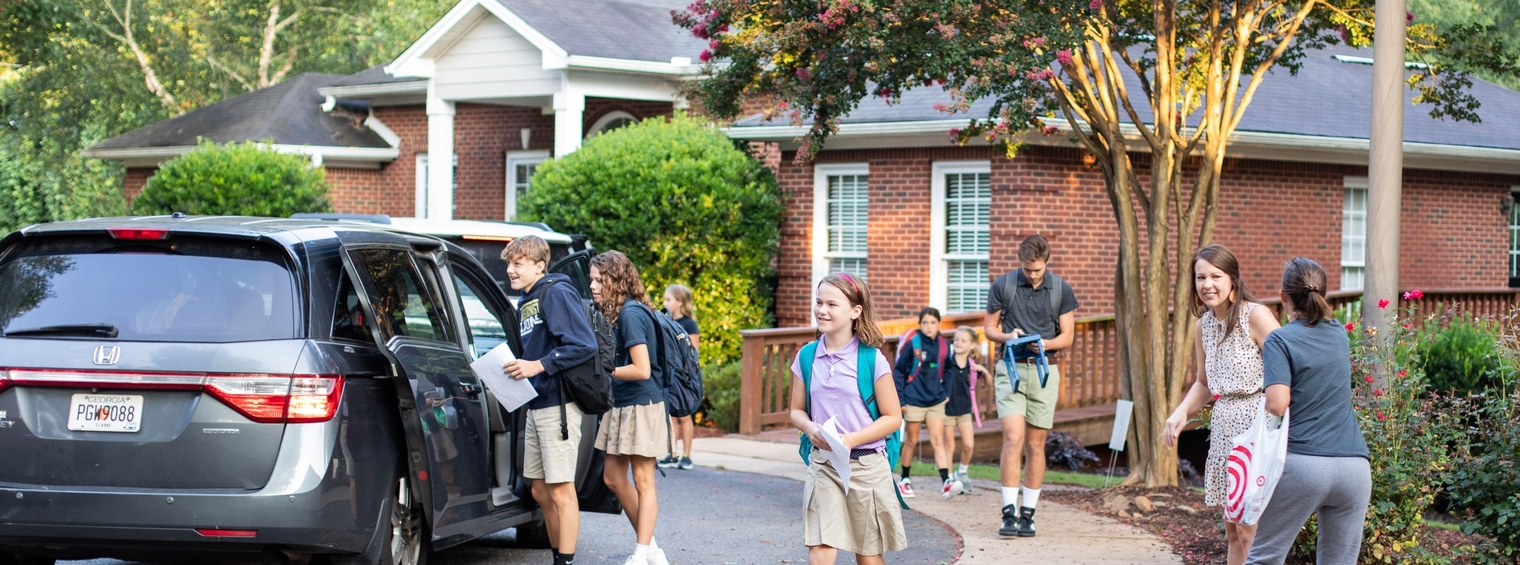

What is Classical Education?
To imagine what Classical Education looks like, picture students who are engaged, smiling, asking questions, embracing rigorous academics, mastering concepts and not just the bare facts, discussing topics eloquently and winsomely while being encouraged to think bigger. As you picture this, allow the sweet laughter of children to play softly in the background or listen to their joyful rhythmic clapping and chanting of catchy jingles to memorize poetry and scripture. This is just a snapshot of Classical Education in action.
In simple terms, Classical Education, the model upon which Westminster bases its classroom structure and teaching methods, teaches the art of learning – more than just what to think, but how to think.
“Is not the great defect of our education today… that although we often succeed in teaching our pupils ‘subjects,’ we fail lamentably on the whole in teaching them how to think: they learn everything, except the art of learning.” – Dorothy Sayers
In more detailed terms, Classical Education is learning built upon the great works of Western civilization taught through a process called the Trivium. The three phases of the the Trivium are grammar, logic, and rhetoric. Together these phases provide the building blocks necessary in developing a lifelong learner.
Students first learn the basic facts, then reasoning skills, and finish by artfully presenting their understanding. Classical education creates a cohesive Christian worldview by connecting all disciplines through consistent thinking. Students learn the art of learning and are thereby prepared for whatever calling God gives them.
What is the Trivium?
The Trivium is not a curriculum, but an approach to education and learning. The goals is to take advantage of what children do best at each stage of their development. The Trivium consists of three stages of learning that fit a child’s God-given abilities.
Grammar Stage
Children build a strong foundation by learning the rules and facts of subjects (phonics, spelling, grammar, addition and multiplication tables) using jingles or songs that they will remember. This goes hand-in-hand with using age-appropriate manipulatives.
Logic Stage
After a child builds a foundation of facts, he or she must learn how to sort them out. In the logic stage, students are taught formal logic and learn to reason. An understanding of logic will not only teach them to recognize valid and invalid arguments, but will provide them with the tools to understand and participate in rational discourse, taking on the culture.
Rhetoric Stage
Students are trained to bring all their learning together and to articulate eloquently, in oral and written expression. The goal of a Christian classical education is to enable students to become independent learners, evaluating all knowledge, and presenting it from a biblical perspective.
The Christian Classical Model
As a Christian academy we guide students through the Trivium with the fundamental human technology—language. To build on this foundation students are introduced to Spanish and Latin beginning as early as third grade.
We teach history chronologically and integrate a biblical worldview in all our subjects — math, science, literature, language, philosophy, art, and more. This enables the students to understand the motivations found in the great thinkers of history and today.
Our students analyze universal themes contemplated by the most influential individuals of the ages. As students are grounded in the wisdom of scripture, they develop the thinking tools necessary to apply God’s truth to the truth of man. Students learn how belief influences action. When students apply this knowledge and find parallels in their own spiritual lives, their studies will have meaning and they develop a passion for learning.
